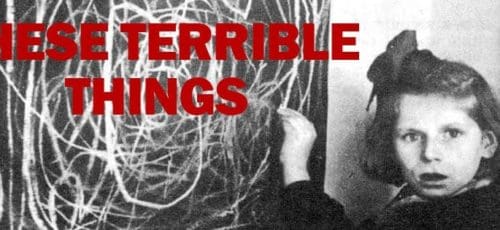On Talkbacks: Theater Artist Justin Jain Dissects The Form
Justin Jain is a Philly-based theater artist, member of The Berserker Residents, and a 2011–12 LAB Fellow.
Audience talkbacks and artist feedback sessions have always been tricky for me. Personally, if I am showing a work-in-progress, I will have already gained all the information I need for my future studio work during the showing itself. I read what resonates and what doesn’t by the audience’s reaction to the piece as it happens. The heat of performance changes everything–the performers step into a level of presence nearly impossible to recreate in rehearsal. It is this presence, and the physical focus of the audience, that allows everyone in the room to ride the wave of the piece together. I can hear the audience laugh at the parts that should (or shouldn’t) be humorous, I can feel the collective confusion or affirmation of moments in the performance, I can sense when the audience’s breathing changes—we all can.
On the other hand, more often than not, during feedback or talkbacks the information I am given from a particular audience is vastly mixed. Feedback participants need to know that the artist is in a very raw mental and emotional state. They have just shown their work—sometimes for the first time—and if they are not ready to receive general feedback, the comments made can indeed be detrimental to that artist’s process. For example, if the people giving feedback are not people I have personally gathered, whose opinions I truly value and whose tastes I understand (thus giving me an insight whether what they are responding to is genuine or simply playing into or against their aesthetic), sometimes the feedback reads as uneducated, uninformed, hurtful, or useless. And this goes for both positive and negative feedback. This is not always the case, but general audience members will speak to a moment I already know needs work, or they’re commenting on something that isn’t valuable at that particular stage in the process, or they praise something that suddenly locks that thing into place. I’ve participated in over a hundred talkbacks, both as artist and audience, and only a handful of those have been useful, practical, and poignant.
However, talkbacks are a now nearly ubiquitous part of the artistic process and can indeed be very helpful. And I, as an artist, will have to continue to participate in them. Different institutions have different models for these, and I have broken these into four models below. It is my hope that with the understanding of these models, the artists’ point of view, and how each of these can be helpful, we can all become better talkback participants.
Model A: For Development of New Work, Institution Initiated

An audience of artists and artistically engaged theater-and-dance-goers make intelligent observations and pose stirring questions. In a perfect world, at least. Photo by Kevin Monko.
Where: Organizations whose full or partial mission is to support the development of new work or artistic leaders. These kinds of talkbacks are birthed out of residencies, commissions, and workshops. The talkbacks/showings are usually set ahead of time to a specific timeline the artist needs to adhere to.
What I can expect: A mix of people will be gathered—fellow artists, people from the institution, and audiences the institution has gathered itself. If the general public is giving feedback, I will do a lot of head-nodding and take notes specifically on things that stand out and things people have more questions about. All other comments relating to “I like . . .” or “I don’t like . . . ” will be heard, though most likely ignored. People will come up to me individually afterward to give me (or my collaborators) personal feedback, though my mind will probably be spinning, and if the person is someone whose genuine feedback I want, I will ask them to email me their thoughts or set up a coffee date. I will generally be more open to the personal feedback that starts with: “I know you have a lot to think about right now, but do you mind if I share some thoughts?” versus directly approaching me with personal opinions.
What I want to happen: I want to talk as little as possible. If my presenter or mentor is providing feedback, I want to listen to what they identify needs attention. If I am asked to “defend my work,” I want that to be done privately with the mentor, presenter, or colleague-artists. I want it to be okay that my answers may be: “I don’t know” and not be reminded that that is “something for me to think about.” I want to be able to articulate beforehand what it is I am specifically looking for with that showing and communicate (also beforehand) with the moderator on how best to conduct the talkback. I do want notes that will help the development of the work, but I don’t want to be so over-saturated with information that I lose my inspiration.
Model B: For Development of New Work, Artist Initiated
Where: Typically a private setting, either in a rehearsal studio, mid-process, or in a workshop format—usually culled together by invite-only. Those invited consist of colleagues and collaborators who are familiar with the artist’s work or whose opinions the artist values. Sometimes the artist will invite organizational leaders whose mission aligns with the artist’s.
What I can expect: These talkbacks will be conducted by people directly involved in the project–either the artist, director, dramaturge, or lead-collaborator. I will have several very specific things I am asking of the group. This form of talkback will be the longest of all of the models. I will hear a lot of opinions and will challenge and question some ideas posed by the group. This feedback session will most greatly influence the work being made because this audience momentarily becomes a collaborator on the piece. Only in this format am I open to prescriptive feedback: “you should . . . ” or “how about . . .” I expect that the feedback from this talkback will continue for days or weeks after the showing—in personal emails, in passing, in phone calls. The people involved in this talkback become “stakeholders” in the success of the project.

In progress showing by devynnemory/beastproductions at Scratch Night at the Live Arts Studio. Photo by Kevin Monko.
What I want to happen: I want a discussion to ensue, for audience members not only to talk to the artist, but to each other. I will go into this talkback with a specific list of questions written down well beforehand and make sure that I get answers from the audience for all of them. I want to video record this feedback and re-visit it another time. I want someone to physically take notes for me, so that I am not buried in a pen and paper. I am looking for “next steps” and where to take the piece from here. And in some way, I want to be reassured that what I’m doing is “right,” that I’m not some crazy artist who should give it all up and go into the corporate world. I also want everyone to be as relaxed and open as possible: beer, snacks, and a comfortable atmosphere help.
Model C: For Audience Outreach
Where: Usually at the larger institutions (regional theatres, mid-size companies). These talkbacks tend to happen on special nights after a performance. The piece itself is relatively “settled” and the audience participating are patrons of that company, students, or the public-at-large.
What I can expect: People will praise a lot of things: performances, the play, or design elements. Some questions will arise about process or the performers themselves. If the talkback is educational in nature, everyone will engage in how the piece relates to the educational thrust of what is being discussed (for example, if it is an adaptation, “How does the book compare to the stage play?”). This talkback will be approximately 15 minutes and will be conducted by someone from the institution. If a dramaturg is present, sometimes s/he will provide background on the play.
What I want to happen: I want audience members to feel like they’ve had an experience that encourages them to cultivate a deeper appreciation for theater or for that institution. While hearing audience members praise me or the production feels good, I mostly want genuine questions. All too often, these kinds of feedback sessions can devolve into endless praise-fest. If I am lucky, I hope that I also gain some personal artistic followers who will support my future work.
Model D: Hybrid, Development of New Work and Audience Outreach
Where: Any non-profit institution that presents performing arts. This model tends to be what most institutions hope for and believe they are conducting. However, this is often the most bastardized model. What institutions are really asking for is Model C.
What I can expect: It depends on the circumstance, but in general this model tends to follow Model A. Sometimes, this model is meant for the general audience at an institution to “meet the artist” and/or “be a part of” their work-in-progress. If I am the artist, I know that I will encounter a lot of enthusiastic arts supporters, who are well-intentioned when they give feedback of the “I liked . . .” or “I didn’t like . . .” variety. There may also be an element of community involvement, asking, “How does this work resonate with this group of people?”
What I want to happen: I want to lead this kind of feedback session, as opposed to being moderated by someone at the institution. That way, I can genuinely get what I need from this group in a way that I am in control of. Oftentimes, moderators (especially those not close to the artist’s work) will steer the conversation in directions that aren’t necessarily what the artist needs at that point in process. If there is a moderator from the institution, I prefer to split the moderating time with them or have an extensive meeting with them prior to the talkback itself. I want the audience to give feedback on moments of clarity and confusion as opposed to aesthetics or prescriptive suggestions. If the talkback is for a specific community of people, I want them talking more than I am, and certainly more than the moderator.
–Justin Jain
See Justin perform with his company The Berserker Residents at Scratch Night at the Live Arts Studio, followed by a talkback session. Having read this article, you can read into his every response!
Scratch Night: Thursday, June 14, at 7pm, featuring works-in-progress by The Berserker Residents, Mike Kiley, and Anisa George. The show is free (and includes complimentary beer) though donations are welcome! Go here to rsvp. (Walkups welcome.)
Live Arts Studio
Philadelphia Live Arts Festival and Philly Fringe
919 N 5th St
Philadelphia, PA 19123
Free onsite parking + abundant neighborhood street parking




